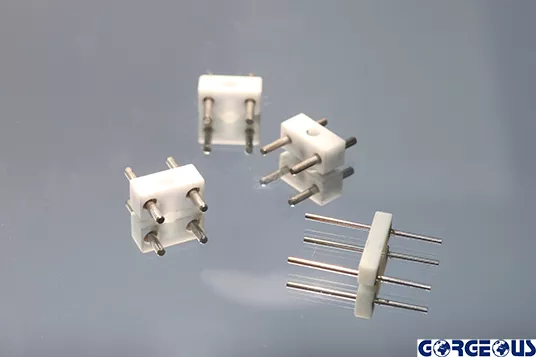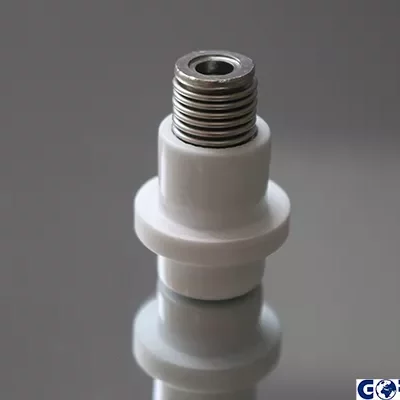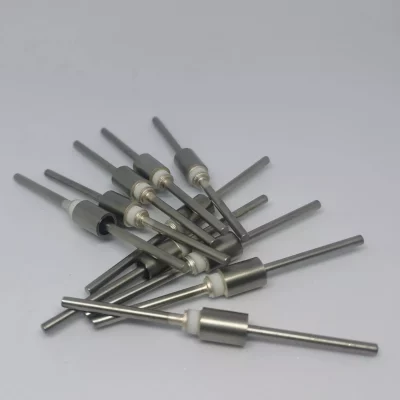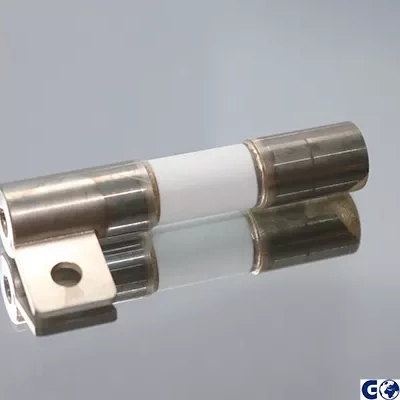Overcoming Challenges: High-Quality Ceramic-Metal Connectors for Diverse Applications
The biggest problems and solutions for ceramic-to-metal connectors
Ceramic-metal connectors offer exceptional performance and reliability in various applications due to their unique ability to join ceramics and metals. However, the very nature of combining these dissimilar materials presents distinct challenges that manufacturers must address to ensure strong, reliable, and long-lasting connections.
This article explores the biggest problems encountered with ceramic-metal connectors and the solutions that guarantee their quality and effectiveness.
Challenges and Solutions
-
Achieving Strong and Reliable Joints
-
Challenge: Wettability: Unlike metals, ceramics don’t naturally form strong bonds with metals due to their surface properties. This can lead to weak brazed joints prone to failure under stress.
- (This magnified image shows a weak brazed joint between ceramic and metal. The braze material hasn’t spread evenly, indicating poor wetting.)
-
Solution:
- Active Metal Brazing (AMB): This method uses brazing alloys with a highly reactive metal that improves the “wetting” of the ceramic surface by the braze material, creating a stronger bond.
- Metallization: A thin layer of metal is applied to the ceramic surface before brazing to enhance the wettability and create a stronger bond with the braze material.
- Brazing Alloys: Under the protection of an inert gas, in a vacuum environment, depending on the type of ceramics and metals being joined, a variety of brazing alloys can be used to address specific challenges. These alloys may include formulations with reactive metals for improved wetting or tailored coefficients of thermal expansion for better CTE matching.
-
-
Overcoming Thermal Expansion Mismatch
-
Challenge: Ceramics and metals typically have different coefficients of thermal expansion (CTE). This difference can cause stress on the joint during heating and cooling cycles, potentially leading to cracks.
- (This image shows a brazed ceramic-metal joint with cracks caused by thermal expansion mismatch)
-
Solution:
- Joint Design Optimization: Careful design of the joint minimizes stress concentration points. This may involve tapered joints that distribute stress more evenly or incorporating flexible elements to absorb some of the expansion/contraction mismatch.
- Braze Material Selection: Selecting a brazing alloy with a CTE closer to the average CTE of the ceramic and metal being joined can help reduce stress build-up.
- Precise Temperature Control: Precise control of temperature during brazing and cooling is essential for minimizing residual stress. Techniques like vacuum brazing, which removes oxides that can hinder brazing, can also be helpful.
-
-
Quality Control Measures
-
Challenge: Even after brazing, flaws like cracks, gaps, or other imperfections can compromise the joint’s integrity. Leakages in airtight applications can also pose significant problems.
-
Solution:
- Flaw Detection: Techniques like X-ray flaw detection equipment are used to identify cracks, gaps, or other imperfections within the joint that could compromise its integrity.
- Leak Testing: A two-step process is employed to ensure airtightness:
- Negative Pressure Vacuum Test: A vacuum pump evacuates the joint to a minimum pressure to assess its ability to withstand low pressure.
- Positive Pressure Tightness Test: Inert gas pressurizes the joint to a specific level to test for leaks.
-
Corresponding Products for High-Performance Ceramic-Metal Connectors
-
Ceramic-Metal Connector:(This image you uploaded depicts a ceramic metal connector) As the image shows, ceramic-metal connectors come in various shapes and sizes to suit a wide range of applications. They are found in diverse fields like aerospace, medical devices, vacuum applications, and high-temperature environments due to their ability to withstand harsh conditions and deliver exceptional performance.
-
Brazing Alloys:As discussed previously, brazing alloys are offered in various formulations to address specific challenges based on the type of ceramic and metal being joined. These alloys may include formulations with reactive metals for improved wetting or tailored coefficients of thermal expansion for better CTE matching. Brazing can be done under an inert gas atmosphere or in a vacuum environment depending on the specific application.
-
Metallization Paste:Metallization paste is a critical material used to improve the bond between the ceramic and the brazing material. It’s applied to the ceramic surface in a clean room environment before brazing.
-
**X-Ray Flaw Detection










